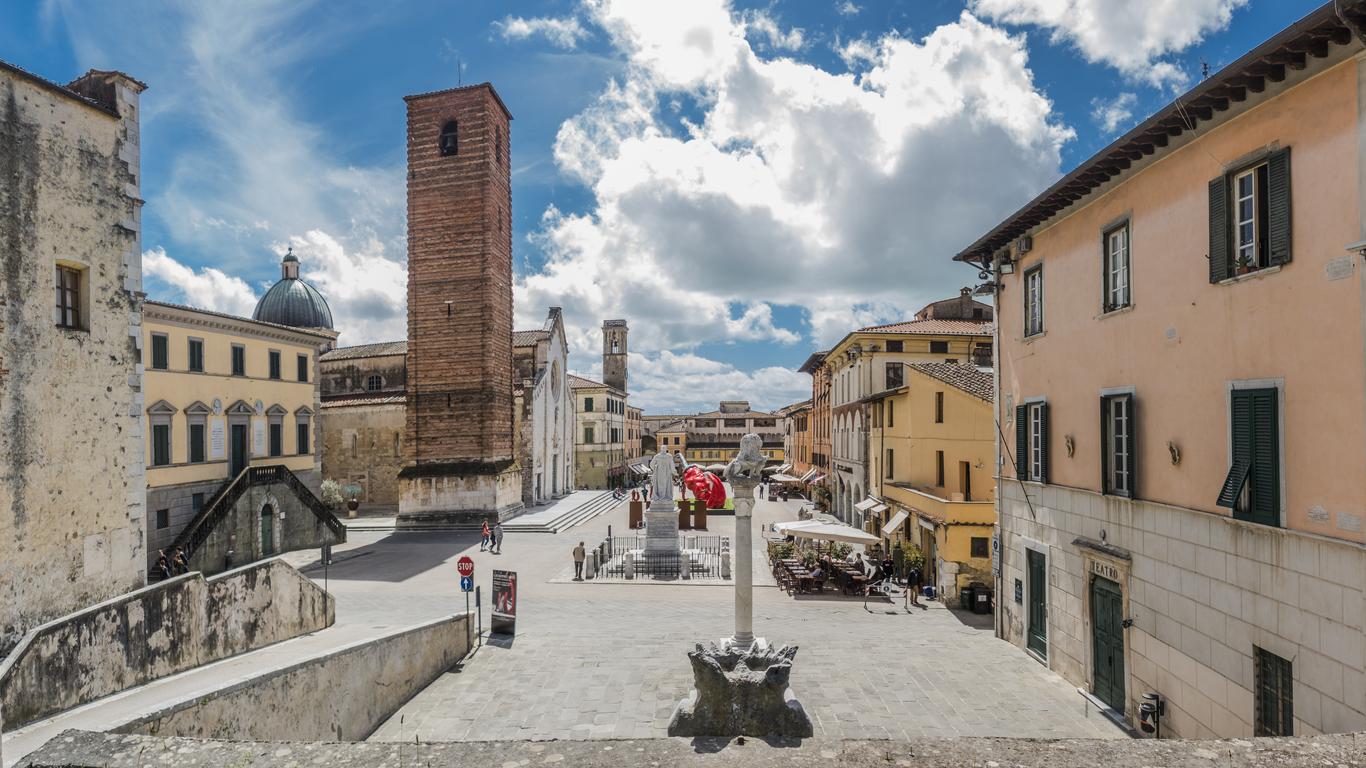Nestled in the foothills of the Apuan Alps, Pietrasanta is a coastal town in the Versilia region of Tuscany. It was established by the Romans and reached its height in the 14th century as part of the Republic of Genoa. Pietrasanta has a long relationship with marble art, with Michelangelo among those to admire the local stone’s natural beauty.
Things to do in Pietrasanta
One of Pietrasanta’s most important architectural landmarks is the Collegiate Church of San Martino, which has a rich history dating back to the 13th century. Gaze up at its 36-metre-high bell tower and marvel at the white marble facade with lunettes depicting scenes from the life of Christ. The interior features religious works by Matteo Roselli, Jacopo Vignali and Ferdinando Tacca.
Also of note is the former church of Sant’Agostino, which was commissioned by the Augustinians in the 14th century. It is attached to a peaceful cloister that is now used as a space for cultural events and art exhibitions. Frescoes illustrating the life of Saint Augustine decorate the walls while sketches by Italian sculptors are displayed in the “Pierluigi Gherardi” Museum of Sketches.
Occupying the 16th-century Palazzo Moroni is the Bruno Antonucci Archaeological Museum, which showcases artefacts discovered in the area. You can get up close to animal remains from the Palaeolithic and Etruscan funerary stones, as well as ceramics, tools and coins from the Roman and medieval periods. Another museum to visit is MuSA, which is dedicated to the excavation and working of marble.
Getting around Pietrasanta
Pietrasanta is around 30 minutes’ drive from Pisa and Pisa International Airport, which has flights to destinations across Europe and North Africa. Regular trains connect to the Pietrasanta railway station and buses travel through the town. The centre of Pietrasanta is compact enough to explore on foot.





